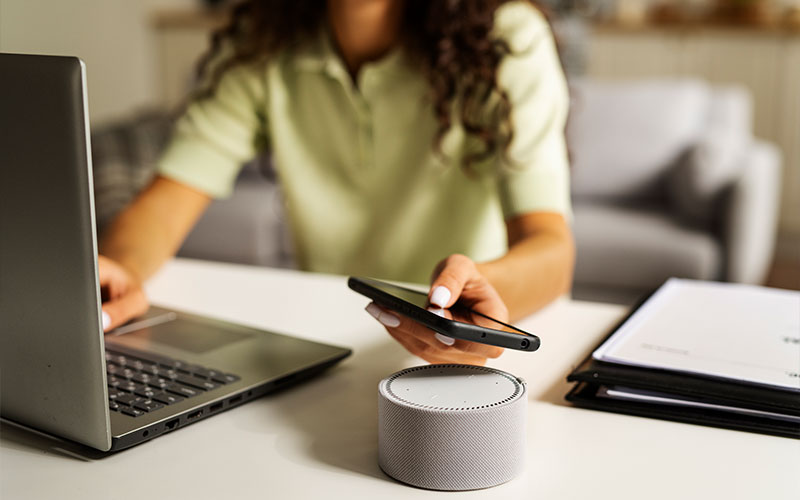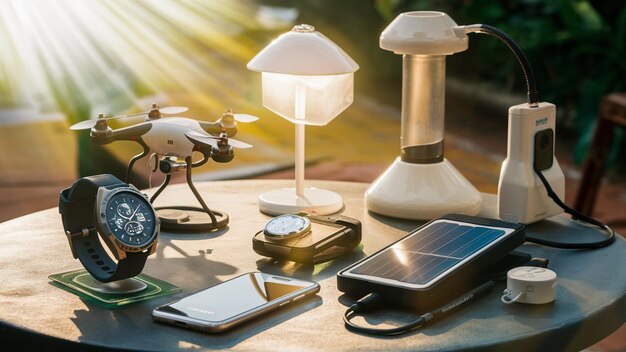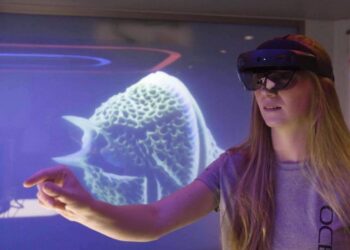In today’s fast‑paced world, cutting‑edge gadgets have become indispensable, reshaping how we live, work, and play. From intelligent home assistants that manage our schedules to wearable devices that monitor our health in real time, the latest innovations are revolutionizing everyday routines. This surge in gadgetry is driven by advances in connectivity, miniaturization, artificial intelligence (AI), and sustainable design. As consumers demand seamless experiences and brands compete for attention, engineers and designers collaborate to deliver products that are smarter, more efficient, and increasingly eco‑friendly. In this article, we explore a broad spectrum of groundbreaking gadgets, examine their practical benefits, highlight key considerations for buyers, and anticipate future trends. Whether you’re a tech enthusiast seeking the next must‑have device or a curious observer eager to understand how these tools integrate into modern life, this comprehensive guide will illuminate the gadgets transforming daily life.
Smart Home Devices
Smart home gadgets streamline household tasks, boost security, and enhance comfort through automation and voice control. Connectivity protocols such as Wi‑Fi, Bluetooth Low Energy (BLE), and Zigbee enable devices to communicate with hubs or directly with smartphones. Leading smart home gadgets include intelligent thermostats, robotic vacuums, smart lighting, and security cameras.
A. Intelligent Thermostats: Devices like the Nest Learning Thermostat analyze occupancy patterns and adjust heating or cooling to optimize energy usage and reduce bills.
B. Robotic Vacuum Cleaners: Models such as the iRobot Roomba s9+ use LiDAR mapping to navigate rooms efficiently, automatically emptying dustbins at docking stations.
C. Smart Lighting Systems: Philips Hue and LIFX bulbs offer customizable color palettes and scheduling, allowing users to simulate sunrise or set mood lighting via mobile apps.
D. Connected Security Cameras: Products like the Arlo Pro 4 provide 2K HDR video, motion detection, and cloud storage, enabling remote monitoring and instant alerts.
E. Voice Assistants: Amazon Echo and Google Nest Hub integrate voice‑activated AI to control multiple devices, answer queries, and manage daily tasks hands‑free.
Smart home ecosystems not only elevate convenience but also contribute to sustainability. By automating lighting and climate control, homeowners can significantly lower energy consumption. Moreover, interoperability standards like Matter are unifying device communication, ensuring that gadgets from different brands work together seamlessly.
Wearable Technology
Wearables have progressed from simple fitness trackers to multifunctional devices that blend fashion with advanced sensors. They monitor vital signs, facilitate contactless payments, and even detect early signs of medical conditions. The global wearable market is projected to exceed $70 billion by 2025, underscoring rapid adoption across demographics.
A. Fitness Bands: Devices such as the Fitbit Charge 5 track steps, heart rate variability, and sleep stages, offering personalized health insights via companion apps.
B. Smartwatches: Apple Watch Series 9 and Samsung Galaxy Watch 6 support ECG monitoring, blood oxygen measurement, and fall detection, while also enabling notifications and apps on the wrist.
C. Smart Rings: Oura Ring Gen 3 embeds infrared sensors to measure temperature, heart rate, and movement, delivering in‑depth readiness scores for optimized training and recovery.
D. Augmented Reality (AR) Glasses: Products like the Nreal Air overlay digital information onto real‑world views, enhancing navigation, translation, and entertainment.
E. Wearable ECG Monitors: Medical‑grade patches such as the BioSticker provide continuous cardiac monitoring, alerting users and clinicians to arrhythmias.
By integrating AI algorithms, wearable devices can analyze complex physiological data to predict stress levels, detect irregular rhythms, and suggest behavioral changes. Data privacy remains a paramount concern; leading manufacturers implement end‑to‑end encryption and give users granular control over data sharing.
Mobile and Personal Gadgets
Smartphones and tablets continue to push boundaries, but a new wave of portable gadgets is emerging to complement mobile ecosystems. These devices prioritize portability, battery life, and seamless integration.
A. Foldable Smartphones: The Samsung Galaxy Z Fold 5 and Huawei Mate X3 feature flexible OLED screens that transition between phone and tablet modes, enabling multitasking on the go.
B. Pocket‑Sized Projectors: Devices like the Anker Nebula Capsule II deliver 720p video from a soda‑can form factor, turning any surface into a big‑screen display.
C. Portable Power Stations: EcoFlow River 2 Pro and Jackery Explorer 500 offer high‑capacity lithium batteries with multiple AC and USB outputs, ideal for camping or emergency backup.
D. Wireless Translation Earbuds: Tools such as the Timekettle WT2 Edge provide near‑real‑time translation across dozens of languages, facilitating cross‑cultural communication.
E. Compact Photo Printers: Fujifilm Instax Link Wide prints smartphone images on instant film, blending digital convenience with tangible keepsakes.
These mobile gadgets empower users to stay productive, entertained, and connected anywhere. Advances in battery technology—such as silicon‑anode and solid‑state cells—promise even longer runtimes and faster charging in next‑generation devices.
Health and Fitness Innovations
Beyond wearables, a host of specialized health gadgets are democratizing wellness by bringing clinical‑grade monitoring into homes and gyms.
A. Smart Scales: Withings Body Companion measures weight, body composition, heart rate, and environmental air quality, syncing data to health apps.
B. Connected Home Gyms: Tonal and Mirror offer interactive strength training with AI‑driven form correction and personalized workout plans displayed on integrated screens.
C. Portable Ultrasound Devices: Butterfly iQ+ connects to smartphones, allowing healthcare professionals and enthusiasts to perform point‑of‑care imaging.
D. UV Sanitizing Gadgets: PhoneSoap Pro uses UV‑C light to disinfect smartphones and small items in under ten minutes, reducing germ transmission.
E. Smart Inhalers: Propeller Health devices attach to standard inhalers, tracking usage patterns and environmental triggers to optimize respiratory care.
These health‑oriented gadgets harness AI to interpret biometric signals, detect anomalies, and deliver actionable recommendations. Remote patient monitoring platforms are increasingly integrating these tools, enabling clinicians to manage chronic conditions more effectively.
AI‑Powered Gadgets
Artificial intelligence is at the core of many breakthrough gadgets, enabling devices to learn user preferences, anticipate needs, and execute complex tasks autonomously.
A. Smart Cameras with Edge AI: Wyze Cam v3 Edge processes video on‑device to detect people, packages, and vehicles without sending raw footage to the cloud.
B. Robotic Assistants: Amazon Astro navigates home environments, provides video calling, and integrates with smart home routines for security and convenience.
C. AI‑Enhanced Headphones: Sony WH‑1000XM5 adapt noise‑cancellation profiles in real time based on ambient sound and wearer activity.
D. Intelligent Cleaning Robots: Roborock S8 Pro Ultra maps multi‑floor layouts and uses AI to differentiate between carpet, tile, and hardwood, adjusting suction and brush speed accordingly.
E. Voice‑Activated Medical Kiosks: Devices like ADA Health station leverage NLP to conduct symptom assessments and recommend care pathways.
By combining machine learning models with powerful on‑device processors, these gadgets minimize latency and protect privacy. As AI hardware continues to shrink and gain efficiency, we can expect even more sophisticated autonomous devices in the near future.
Sustainable and Eco‑Friendly Gadgets

Environmental concerns are driving a new generation of gadgets designed with recyclability, low power consumption, and renewable materials in mind.
A. Solar‑Powered Chargers: Brands like Anker and Goal Zero offer portable solar panels that deliver reliable off‑grid charging for phones, cameras, and laptops.
B. Biodegradable Phone Cases: Pela Case uses plant‑based biopolymers that decompose naturally, reducing plastic waste.
C. Energy‑Harvesting Wearables: Products such as Kinetic Energy Recovery devices convert movement into electrical energy to power sensors.
D. Eco‑Friendly Speakers: House of Marley builds Bluetooth speakers from reclaimed wood, bamboo, and recycled plastics, blending performance with sustainability.
E. Low‑Power E‑Ink Tablets: Devices like reMarkable 2 use e‑ink displays and minimal refresh rates to extend battery life to weeks, reducing electronic waste.
These sustainable gadgets often carry certifications—such as Energy Star, EPEAT, or Fair Trade—assuring consumers of their environmental credentials. As circular economy principles gain traction, manufacturers are adopting take‑back programs and modular designs to extend product lifespans.
Entertainment and Media Gadgets
From immersive audio systems to handheld gaming consoles, entertainment gadgets are redefining how we consume media.
A. Virtual Reality (VR) Headsets: Meta Quest 3 and Sony PlayStation VR2 deliver high‑fidelity experiences with inside‑out tracking and haptic feedback controllers.
B. Portable Gaming Devices: Steam Deck and Nintendo Switch OLED combine console‑grade performance with handheld portability, offering extensive game libraries.
C. Smart Projectors: Epson EpiqVision Ultra Short Throw projectors cast 4K images on walls from inches away, transforming living rooms into home theaters.
D. High‑Resolution Audio Players: Astell&Kern and Sony Walkman NW‑ZX707 support native DSD and FLAC playback, catering to audiophiles.
E. Interactive Fitness Mirrors: Tonal and Mirror double as workout platforms and streaming entertainment hubs, integrating classes with social features.
These media‑focused gadgets increasingly leverage cloud streaming, edge caching, and AI‑driven recommendations to deliver personalized experiences. 5G connectivity is further enhancing on‑the‑go entertainment by reducing latency and buffering.
Buyer’s Guide: Choosing the Right Gadget
With a flood of new gadgets hitting the market, consumers must navigate specifications, ecosystems, and price points to find the ideal device. Consider the following factors:
A. Compatibility: Ensure the gadget integrates with your existing devices and preferred platforms (iOS, Android, Alexa, Google Home).
B. Battery Life: Review real‑world usage statistics; manufacturer claims often differ from typical daily use.
C. Data Privacy: Examine the vendor’s data handling policies and encryption standards.
D. Build Quality and Warranty: Look for durable materials, water‑resistance ratings, and comprehensive warranty coverage.
E. Software Support: Check for regular firmware updates and active developer communities.
F. Price vs. Value: Balance upfront costs against long‑term benefits such as energy savings or productivity gains.
G. Sustainability Credentials: Favor products with eco‑friendly materials, energy certifications, and end‑of‑life recycling programs.
By prioritizing these criteria, buyers can make informed decisions that align with their needs, budgets, and ethical standards.
Future Trends in Gadget Innovation

The pace of gadget evolution shows no signs of slowing. Key trends on the horizon include:
A. Edge AI Proliferation: More devices will perform complex AI tasks locally, reducing cloud dependence and improving responsiveness.
B. Modular Upgradability: Gadgets designed with swappable components—such as batteries, sensors, and cameras—will extend product lifecycles and reduce waste.
C. Biometric Authentication Everywhere: From in‑screen fingerprint sensors to vein‑pattern recognition, secure and frictionless access will become ubiquitous.
D. Mixed Reality Convergence: AR and VR will merge into seamless mixed‑reality experiences for work, education, and entertainment.
E. 5G and Beyond: Ultra‑low‑latency networks will unlock novel applications in telemedicine, remote robotics, and immersive media.
F. Sustainable Tech Ecosystems: Entire product lines will be designed under circular economy principles, with take‑back, refurbishment, and material recovery built in.
G. Human‑Machine Collaboration: As AI agents and robots become more capable, collaborative workflows between humans and machines will transform industries from manufacturing to healthcare.
Staying abreast of these developments will help consumers and businesses leverage the full potential of emerging gadgets.
Conclusion
The latest gadgets are doing more than adding convenience—they are redefining our interactions with the world around us. From AI‑powered home assistants that anticipate our needs to eco‑friendly wearables that monitor health without harming the planet, innovation is accelerating at an unprecedented rate. By understanding the capabilities, benefits, and considerations of these devices, individuals can curate a personalized tech ecosystem that enhances productivity, entertainment, and well‑being. As sustainability and edge AI take center stage, the gadgets of tomorrow promise to be smarter, greener, and more seamlessly integrated into daily life than ever before.












